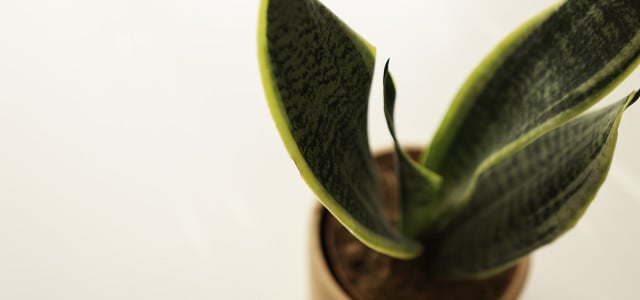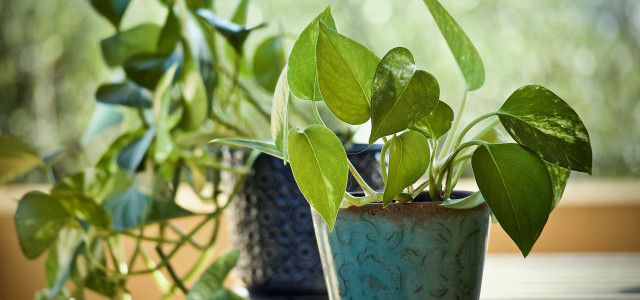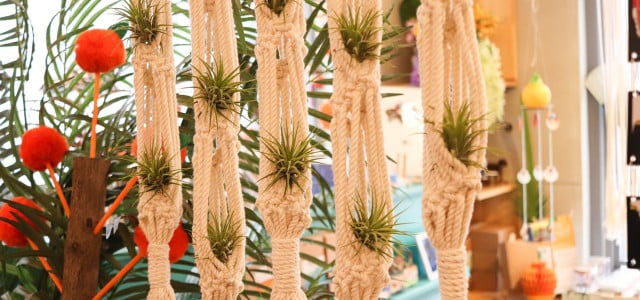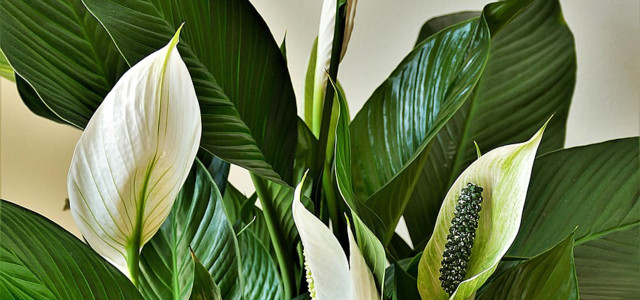While fairly uncommon, there are some plants which will prefer shade to long periods of sunlight. So if you're home is lacking light, here are some of the best indoor plants for dark rooms.
Growing plants indoors can be the perfect way to make a welcoming, enlivened atmosphere. There is a growing social appreciation for houseplants as we begin to acknowledge the benefits of having greenery in the home. Don’t be dismayed if your home has some darker rooms which receive less sunlight throughout the day. With this increase in the popularity, there has been an equal increase in accessibility of houseplants.
It’s difficult to find any plants native to North America that will tolerate the shade because the ones that do are typically ground dwellers from subtropical forests where they’re used to extremely dense canopies. The best you can do to source these plants responsibly and sustainably therefore is to propagate from already existing plants.
1. Tree Houseleek
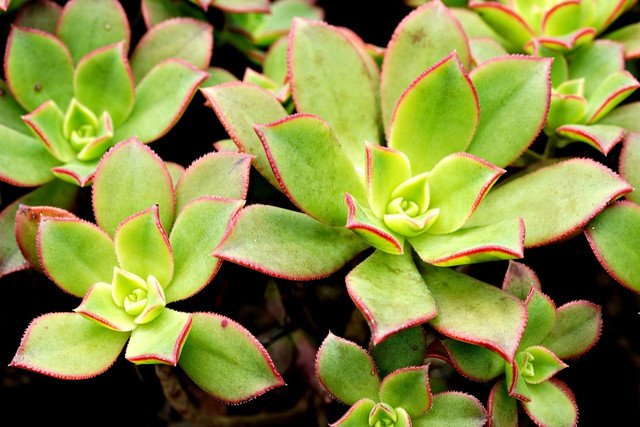
(Foto: CC0 / Pixabay / ignartonosbg)
Unlike most succulent plants, tree houseleek (aeonium volkerii) does not enjoy the dry and sunny desert conditions that you would expect, favoring more shady and moist conditions. That being said, some exposure to sunlight will enhance the color of the plant, increasing the red tones on the edges of the leaves.
You should aim to repot this succulent every two or so years, just before the growing season in early spring. To ensure it has enough nutrients and drainage in its soil. During any cold spells, you should only water when the soil is completely dried out. You should never let this plant stand in its own water at any time of the year either, as it is very prone to root rot – especially in the winter.
While this plant is native to Tenerife, tree houseleek can be successfully grown in American climates and, like many other succulent species, can be easily propagated from its leaves.
2. Angel Wing Begonia



(Foto: CC0 / Pixabay / Veronika_Andrews)
Native to South America, these perennial flowering plants grow in subtropical and tropical climates. A small amount of morning sunlight and the shade throughout the remainder of the day will be perfect, as direct sunlight can easily scorch their signature spotted leaves.
Angel wing begonias (begonia coccinea x aconitifolia) are hybrid cane Begonias which resulted from a cross between Begonia aconitifolia and Begonia coccinea. The hybridization was made by California plant breeder Eva Kenworthy Gray in 1926. Ever since then, this particular species has been widely available across the Americas.
They handle with climate differences well and can grow in cooler conditions. However, during the winter, you should reduce watering to only when the top layer of soil is dry. Regular watering in the summer and occasional misting is recommended to increase humidity around the plant.
3. Snake Plant
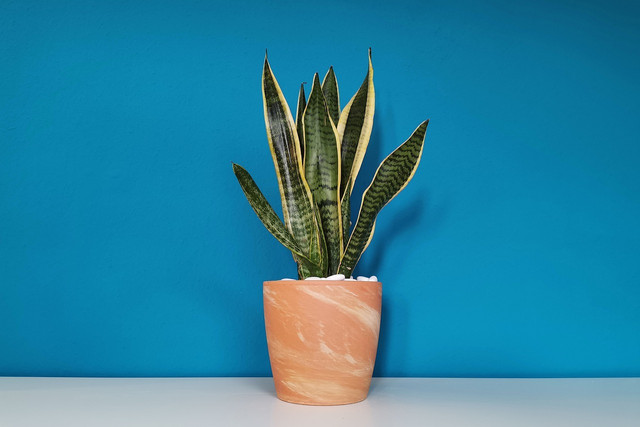


(Foto: CC0 / Pixabay / KRiPPS_medien)
Snake plants (dracaena trifasciata) are a slow growing, exotic-looking succulent that you’ve probably seen in many homes. The stiff banded leaves can reach an impressive height of 8 feet in the best conditions, although they only produce a maximum of one or two new leaves a year. Very tolerant of neglect, snake plants will grow happily in light or shade without any frequent need for repotting.
The only real worry with these hardy plants is overwatering. You should water moderately in the summer, but always leave the top half of the soil to dry out between watering. In the winter, water very sparingly, just enough to prevent the soil from drying out completely.
Dracaena trifasciata is native to the west of Africa, there are many ways to successfully propagate this plant. Instead of importing new plants, the most ethical and sustainable way of growing your indoor garden is to have patience and green thumbs!
An added bonus to having this plant around your home is that it is one of the best plants for filtering and creating clean air in your home.
4. Devil's Ivy
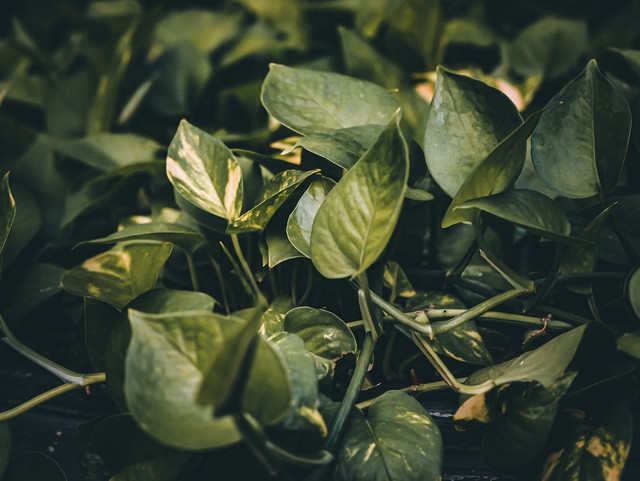


(Foto: CC0 / Pixabay / Javaistan)
Devil’s ivy (Epipremnum aureum) will tolerate shade in the summer months but would much rather have a strong source of light in the winter. So while in the summer it won’t mind a shaded room, you might want to invest in some grow lights in order to keep things climbing vine from dying.
It is extremely easy to both grow and propagate. Water frequently in the summer to help promote growth and strong stems. Reduce watering in the winter to a minimum, allowing the topsoil to completely dry out between watering.
5. Kentia Palm
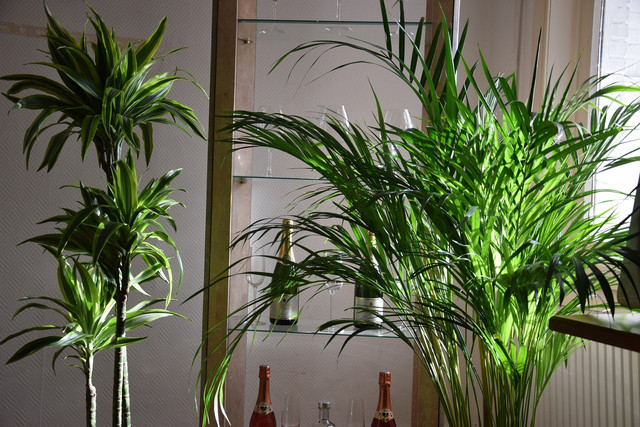


(Foto: CC0 / Pixabay / Emmanuel-JR)
The Kentia palm (howea forsteriana) is a slow growing plant that is very tolerant of shade, dry air/general neglect ,and are among the most popular houseplants. Keeping them out of direct sun, which can burn their fronds, and misting them occasionally will both help to keep them looking healthy, although these measures aren’t strictly necessary.
Howea forsteriana gained great popularity as a houseplant in Europe and the United States during the 1870s. This was in part because the plant thrived in interiors where low light, low humidity, poor air quality, and cool temperatures made palms otherwise impossible to grow. While they’re slow growing, these palms can easily grow up to 6 feet tall in a couple of years.
You should avoid repotting and opt for potting-on whenever possible, as the roots are extremely intolerant of disturbance. Because of this, however, it is difficult to propagate these plants by separating them out, as this can often kill them. Furthermore, since kentia palms are native to Australian Howe Island and Norfolk Island, they don’t have a particularly positive carbon footprint unless grown locally.
6. Boston Fern
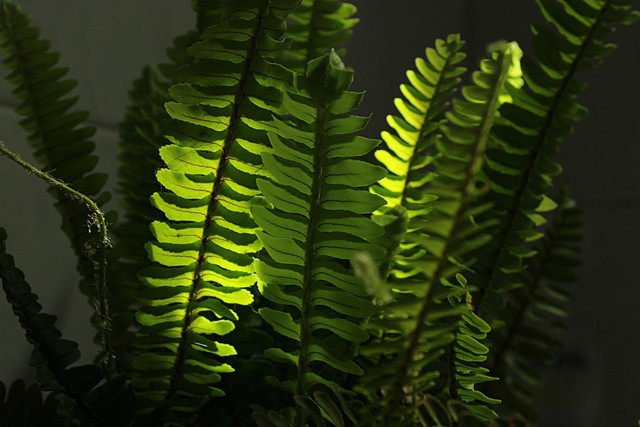


(Foto: CC0 / Pixabay / inonoyazy)
The lush green Boston fern (nephrolepis exaltata) is commonly grown as a houseplant. Used to living under the protection of larger trees and plants in the humid forests and swamps in South America, the Boston fern can easily survive long periods of shade in darker rooms. However, it does still need some bright, indirect natural light to really flourish.
This fern wants high humidity and moist soil that should never be allowed to dry out. For this reason, placing or hanging these plants in bathrooms is a great way for this fern to get all the humidity it requires. However, you should reduce watering in the winter since the plant will be dormant and overwatering can lead to root rot.
One thing to look out for with these plants is that they produce dark brown spores on the underside of the leaves. Don’t mistake these for insects or disease!
7. Staghorn Fern
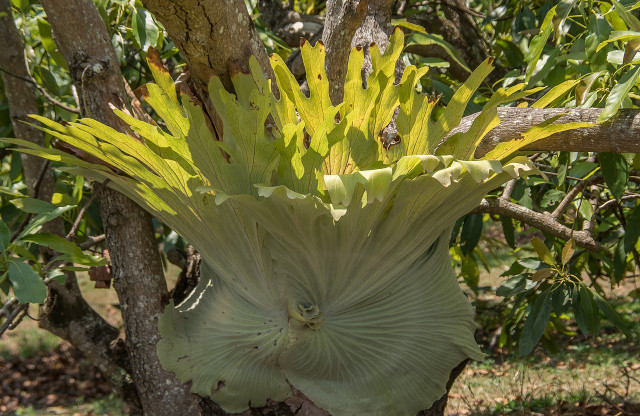


(Foto: CC0 / Pixabay / sandid)
The staghorn fern (platycerium bifurcatum) is an epiphyte occurring naturally in tropical areas. In the wild epiphytes, or “air plants” cling to trees using roots and sterile fronds, however they are a commonly grown houseplant. Indoors, staghorn ferns are often grown on a slab of wood or bark.
Growing under the canopy of trees in the wild means that staghorn ferns do not need much light, and they will live happily in a shady room with occasional direct sunlight. You should mist the leaves on a regular basis while allowing the roots to dry slightly between watering, never letting the roots dry out completely.
Since the staghorn fern originates from Southeast Asia, Australia, Polynesia and subtropical Australia, finding a sustainable way of acquiring this plant is tricky. Although the staghorn fern does produce its own pups from its rhizomes which can be propagated, it’s not so easily done as many other plants on this list.
8. Peace Lily
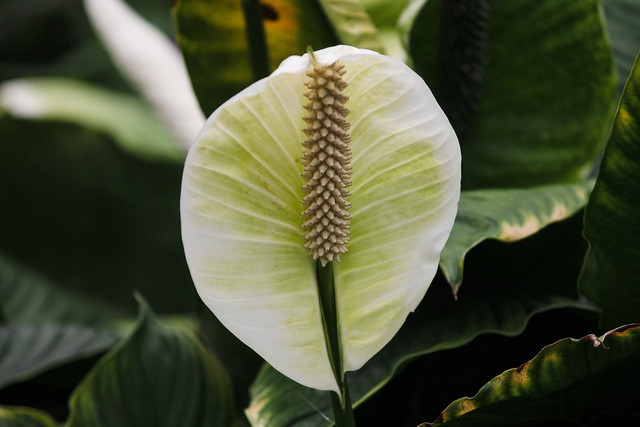


(Foto: CC0 / Pixabay / manfredrichter)
Because the peace lily (spathiphyllum wallisii) is a fairly small plant, they are suitable to place where you see fit, as long as you keep it out of direct sunlight. They really do best in a lightly shaded spot, which will mimic their natural habitat on South American forest floors.
The lowers for which the spathiphyllum wallisii is famous begin blooming with a twist at first before flourishing white lilies which can last a couple of months. While the shade of a dark room is sufficient for this plant to live happily, a small amount of indirect morning or evening light are required for the flowers to bloom.
Cleaning the leaves gently with a soft sponge will keep them looking healthy and attractive. One thing to note, however, is that this plant is toxic to cats and dogs and therefore will not make a good indoor plant if you share your home with any pets.
9. Zanzibar Gem



(Foto: Utopia / Annie Granger)
Zamioculcas zamiifolia, also sold under the name ZZ plant, is a tropical perennial plant that can cope very well with neglect. Zamioculcas can cope very well with long periods of low light conditions, which makes them perfect for a shady room.
You can easily overwater a Zanzibar gem, so make sure that the soil is completely dry between watering to prevent root rot. Although mostly an evergreen, it becomes deciduous during periods of drought, losing its leaves and using water stored in its large underground rhizome.
While this plant is native to eastern Africa, it is another easy to propagate plant and can therefore be most sustainably acquired by separating the rhizomes or rooting leaf cuttings. However, propagation of ZZ plants by division can only be done once in a while. This is because the plant produces new rhizomes very slowly, and removing some frequently will damage the parent plant.
Read more:
- Growing Mojito Mint: Here’s What You Should Know
- The 12 Most Stunning Plants That Flower in Winter
- 13 Noteworthy Houseplants That Are Safe for Cats and Dogs
Do you like this post?







